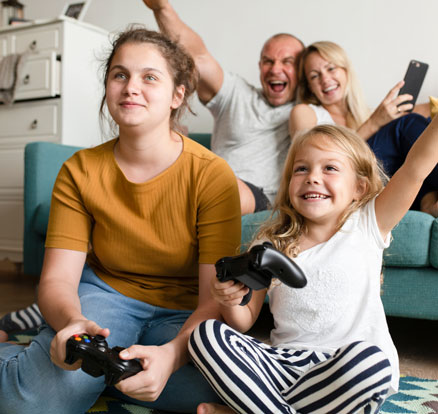
A checklist when your child starts using social media
Use this checklist when children are going out on social media. As they get older, teach them to be conscious and take responsibility for privacy on their own.
Choose language in the Google-box below. Some translations may be flawed or inaccurate.
Although the age limit for social media use is 13 years, according to the Norwegian Media Authority’s surveys, half of all nine-year-old children in Norway are using social media (Barn og Medier, 2020).
Here are some tips to keep children safe online:
1) Check the age limit in the Terms of Use also
Every social media app has a recommended age limit in the app store. It says the suitability of the content. However, there might be a different age limit in terms of use. If this is thirteen and younger child registered, the account could potentially be removed/deleted.
2) Set your account as “private”
On platforms like TikTok and Instagram, it is possible to select an account as “private.” The child then must approve new follower requests and only the approved followers will be able to see photos and videos that are published.
3) Use two-step verification
Two-step verification adds an extra layer of security against stealing accounts. For this, you have to enter a unique code every time you log on to the account from a new device. The code is usually sent through SMS, email, or via a code approver app.
4) Don’t let everyone see “everything”
Your child may want to share something fun and personal with a group of friends, not letting everyone on the contact list watch it. On Instagram and Snapchat, you can create a list with selected recipients, so you can easily share content with just them. YouTube also has an option to share videos in the form of private links.
5) Reduce hateful comments
There is little doubt that online comments can sometimes be rather relentless. With some social media like TikTok, Instagram, and YouTube, it is quite possible to narrow down the comments section. You can shut it down completely, allow for friends only, or choose to keep it open to everyone.
On Instagram, it is possible to hide the number of likes on posts! And on all social media, there are options for blocking and reporting.
7) Consider denying location service
Social media apps “love” to convey the user’s physical location to the outside world by tagging location. However, one may completely deny the app to access the device’s GPS function.
Discuss with your child when to avoid tagging location when posting videos and photos. Snapchat has a ghost mode that hides the location or setting that shows locations only to friends.
8) Take control of the algorithm
A lot of content in social media is algorithmically controlled. The platforms remember what kids are watching, searching, and “liking.” Then the apps suggest more of the same type of content.
However, you can take control of the algorithm. These services have their own button called something like “I don’t like it,” which allows children to let the algorithm know that they don’t want more similar content.
This is especially useful if children receive more and more content that they find problematic and undesirable.
Read more Kids and Media articles here.
(A longer version in Norwegian is available here. Translated and shortened by Ratan Samadder.)
Utviklet som en del av Erasmus+ prosjektet «TeachingTools».











